50000 Indian Farmers Are Cutting Costs & Saving Crops — Thanks to a Drone Built by 2 Engineering Students
It’s early morning in a quiet village in Uttar Pradesh. The sun is just rising, casting a soft golden glow over the fields. A farmer stands at the edge of his land, watching something unusual in the sky—a small drone buzzing gently above his crops. He’s seen it before, but it still feels a little like magic. The drone moves smoothly over the plants, scanning everything below. A few minutes later, his phone pings. It’s a message on WhatsApp, with a map of his farm. The message tells him where his crops are stressed, where pests might be hiding, and what he should do next—all in simple words, in his own language.
He doesn’t have to guess anymore. He doesn’t have to waste money on extra sprays or wait for a local dealer to visit. A few taps on his phone, and the exact treatment he needs will arrive at his doorstep. For farmers like him, this tiny flying machine is not just about technology but peace of mind. And it all started because two young engineers brought their drones to the fields, simply hoping to help.
In India, where farming is as much a heritage as a livelihood, generations of farmers have relied on intuition, inherited wisdom, and the occasional advice of a pesticide dealer to tend their fields. But in today’s climate-challenged world, where pests evolve faster than the solutions meant to stop them, such instinctive methods are no longer enough.
“I used to check my field just by walking around. If I noticed any yellowing or pest, only then would I take action, but by that time, the problem had often already spread,” says Atendra Kumar Verma, a small-scale farmer from Barabanki, Uttar Pradesh.
The farmer’s experience reflects the daily uncertainty faced by millions of farmers across India, until two aeronautical engineering graduates decided to change the script by bringing aerospace technology to agriculture.
How college drone experiments took root in rural agriculture
Amandeep Panwar from Delhi and Rishabh Choudhary from Allahabad weren’t farmers. They weren’t even thinking about agriculture. Their world revolved around drones, circuits, and flight paths. As engineering students at BBDNITM, Dr APJ Abdul Kalam Technical University in Lucknow, their days were spent tinkering in labs and flying drones wherever they could find open skies.
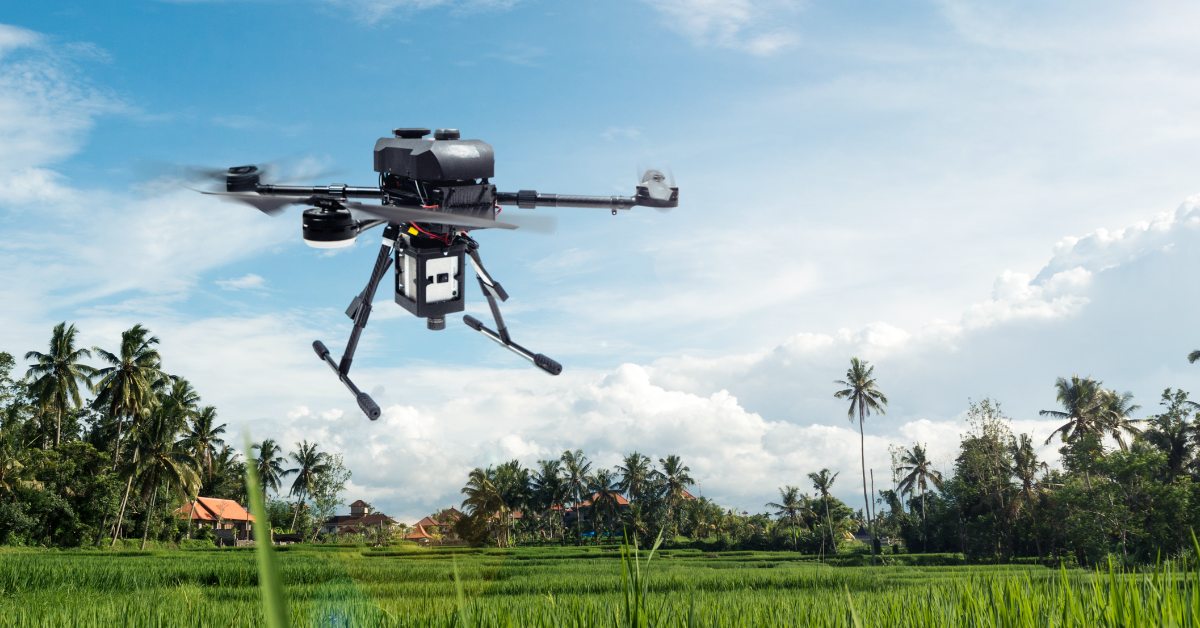 Amandeep and Rishabh used to test their drones in the nearby fields of Barabanki
Amandeep and Rishabh used to test their drones in the nearby fields of Barabanki
The neighbouring fields of Barabanki became their informal testing ground—a quiet patchwork of farmland where their machines could fly freely, far from city interference. At the time, it was just about experimentation, a chance to push the limits of what their drones could do.
But then, something changed.
What Began as a Drone Experiment Became a Lifeline for Farmers
Farmers from nearby villages started gathering, not just to watch the drones, but to ask questions: Can this spot pests? What’s wrong with my crop? Why are my leaves turning yellow?
The duo had no immediate answers. But the questions stayed with them. What if the very machines they were building for fun could be used to help solve real, urgent problems in the fields below?
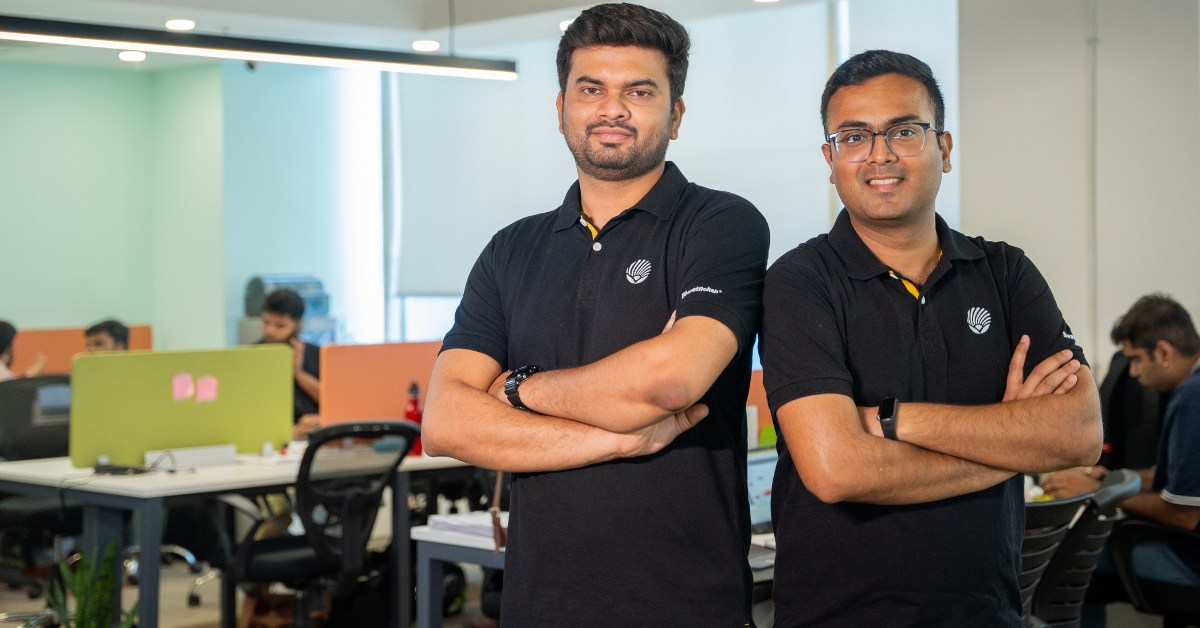 The duo began visiting Krishi Vigyan Kendras (KVKs) to understand the problems of farmers better
The duo began visiting Krishi Vigyan Kendras (KVKs) to understand the problems of farmers better
That curiosity sparked a journey they never planned for—one that led to the founding of BharatRohan, a pioneering agri-tech company that now uses drone-based hyperspectral imaging to monitor crop health, support over 50,000 farmers across seven states, and reduce pesticide usage and input costs. What started as a college hobby evolved into a movement to make farming more precise, sustainable, and profitable—one flight at a time.
Curious glances and crop questions: An accidental beginning
“Farmers would gather around and ask us about their crops, including questions about pest attacks, yellowing leaves, diseases,” Amandeep tells The Better India. “They assumed we knew the answers because we were engineering students. Even though we did not know the answers back in 2015, we were curious, and we wanted to help,” he adds.
The duo began their journey by visiting Krishi Vigyan Kendras (KVKs) to better understand agricultural issues. While these centres offered scientific support, they were overstretched, typically serving only a few hundred farmers across large regions. They realised that most growers still depended on advice from fellow farmers or local agrochemical dealers.
“We realised the real gap was not information, it was access to scientific data about the crop health,” Rishabh explains. “And we began thinking, what if we could use the tools we already understood, like drones and imaging, to make that advice available to every farmer?”
Remote sensing and aerial imagery have already found wide application in defence, mining, and space exploration. The duo’s training had exposed them to technologies like hyperspectral imaging, which was famously used by ISRO’s Chandrayaan mission to detect minerals on the moon. Could the same tech be used to detect early signs of crop stress here on Earth?
“Hyperspectral cameras can pick up over 140 colour bands across the spectrum, while the human eye sees only three, mainly red, green, and blue,” Amandeep explains. “If a plant is suffering from a disease or nutrient deficiency, its spectral signature changes even before visible symptoms appear. That is what we capture.”
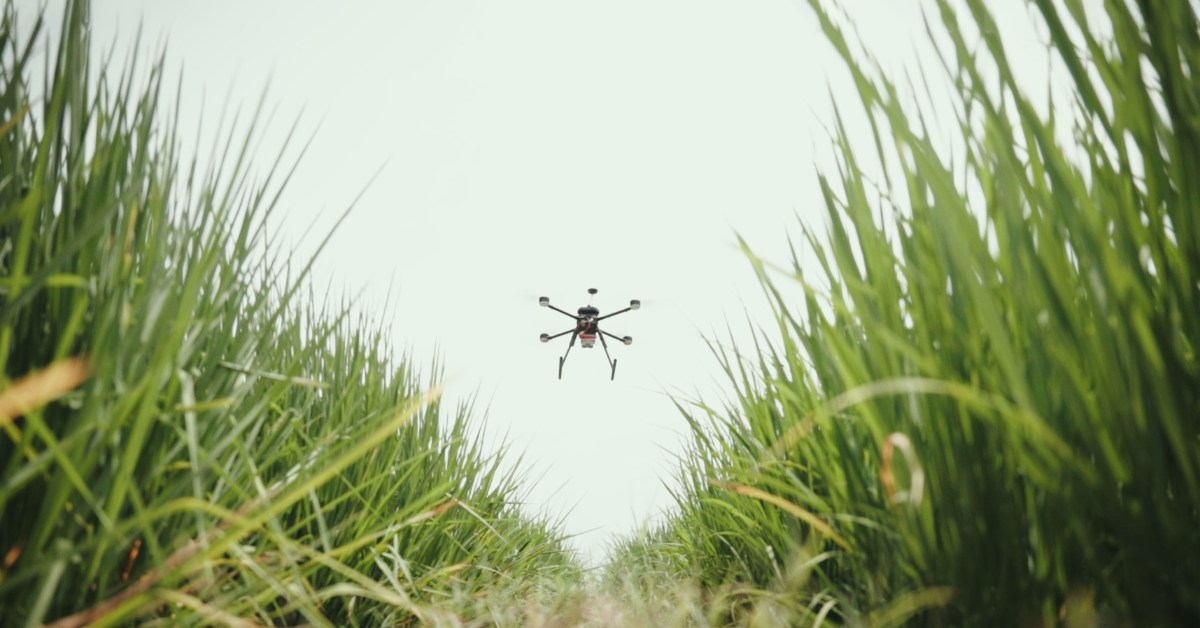 The drones have hyperspectral cameras that detect problems in the crops before any visible signs
The drones have hyperspectral cameras that detect problems in the crops before any visible signs
However, hyperspectral sensors were expensive and bulky, designed for satellites, not small drones. So the pair partnered with manufacturers in the US and Belgium to miniaturise and adapt the technology for use in Indian agriculture.
Making space-age sensors fit village skies
In 2016, just a year after graduating, Amandeep and Rishabh turned their idea into action. They launched BharatRohan with one bold goal: to bring the power of drone-based hyperspectral imaging—a technology more commonly used in space exploration—into the hands of smallholder farmers across India.
They started small, working with just 42 farmers across six tehsils in Barabanki. But scaling proved harder than they imagined. Each drone flight could cover only two to three acres, and the farms were spread out across distant villages. Too much time was spent travelling and setting up, and the logistics quickly became inefficient.
“We realised we needed to work with farmers in clusters, around 100 to 150 acres in a single village,” Rishabh explains. “It made drone operations more efficient and allowed us to engage with communities at scale.”
This shift allowed them to optimise drone usage and build deeper relationships with local farming communities. But as their reach grew, so did the complexity of what they were offering. Their recommendations—backed by advanced imaging and crop health data—were precise and timely. Yet farmers couldn’t always act on them.
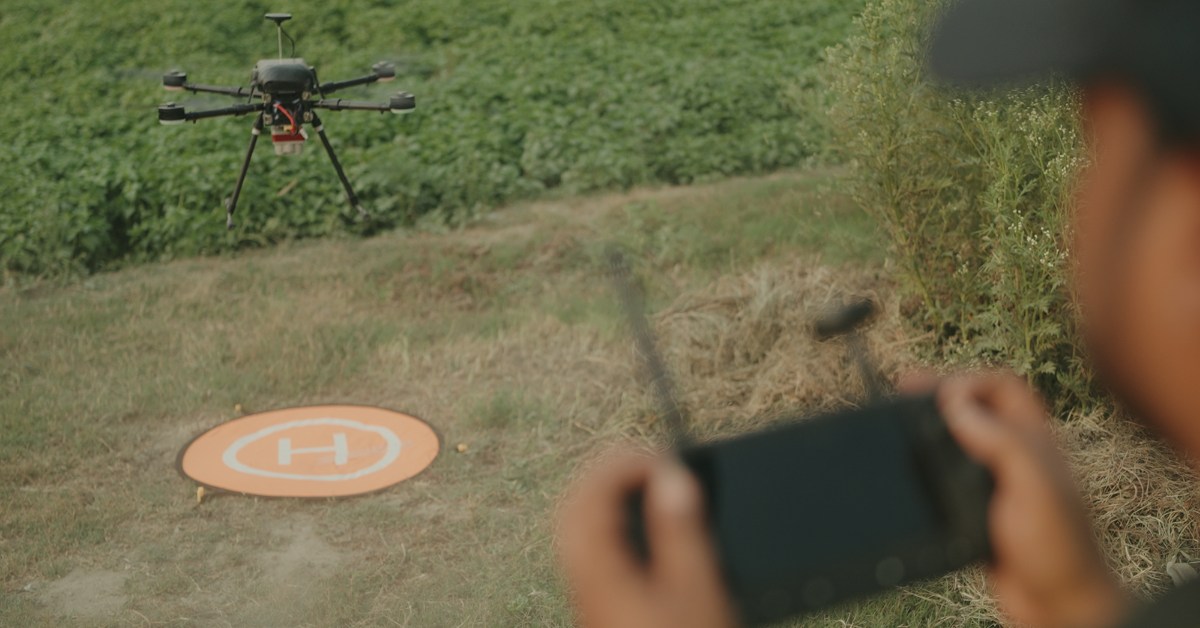 After detecting the problems in the crops, the BharatRohan team provides suitable solutions to the farmers to control the disease
After detecting the problems in the crops, the BharatRohan team provides suitable solutions to the farmers to control the disease
That’s because the treatments required—like specific micronutrients or bio-sprays—were often unavailable in the local market. And without easy access to the right inputs, the technology’s full potential was out of reach for many.
“We would tell farmers exactly what their crops needed, say, a zinc supplement or a biological spray, but those inputs were not always available locally,” Amandeep says.
The innovation was working — but to truly make a difference, they’d have to go beyond diagnosis and into delivery.
To bridge that gap, they launched Pravir, BharatRohan’s line of biological agri-inputs such as Silvershakti, Humeshakti, Jadshakti, and Immunoboost. The products complement their integrated crop management approach, which prioritises mechanical and biological solutions before chemical intervention.
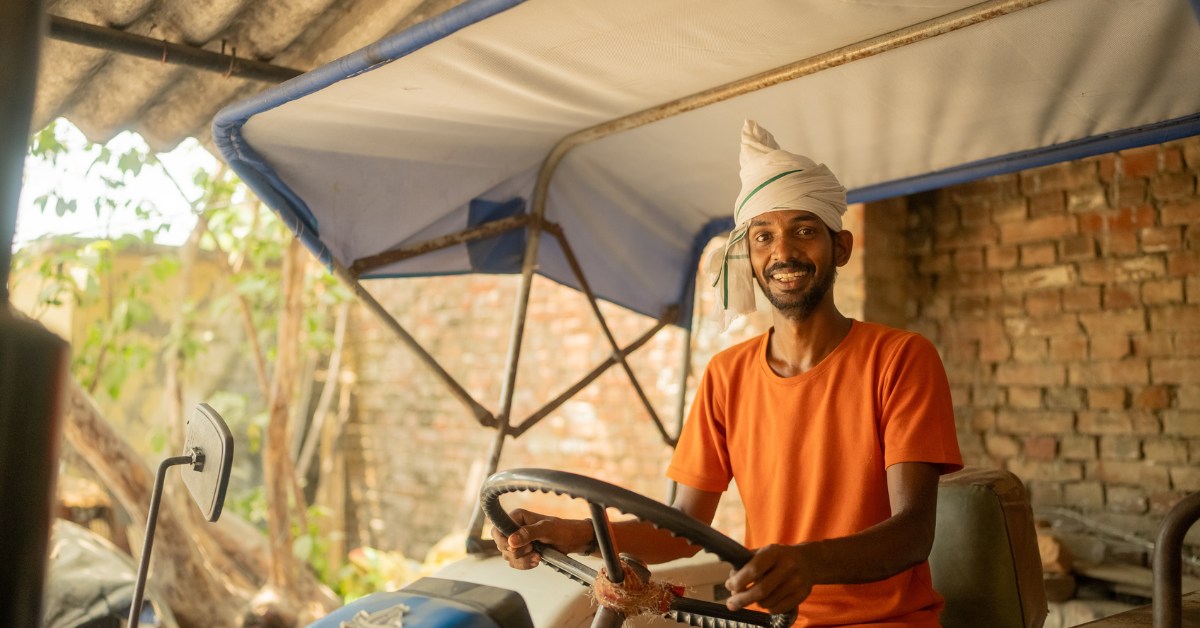 Farmers receive a detailed analysis of their crop health via WhatsApp, and they can access the solutions easily
Farmers receive a detailed analysis of their crop health via WhatsApp, and they can access the solutions easily
“We are not just here to identify problems and leave them at that,” explains Rishabh. “Our goal is to offer practical solutions that farmers can implement, helping them tackle issues effectively without relying heavily on chemicals or costly inputs.”
The changes in the fields have made a difference for many farmers. “Before, I mostly depended on my own experience or tips from fellow farmers, but I often missed early signs of disease and ended up overusing sprays,” explains Hari Prakash, a farmer from Barabanki.
“With BharatRohan, I received clear and precise instructions, what chemicals or treatments to use, the exact quantity, and the specific areas of my field that needed attention. They even provided detailed maps of my farm, similar to satellite images, making it easy for me to understand and act confidently.”
Pawan Kumar, another farmer, adds, “Before, it was all guesswork. Now, I know exactly what is wrong and what to do. It is quicker, cheaper, and more effective.”
Atendra Kumar Verma, the farmer from earlier, reports a 30–35% increase in yield and a 30% reduction in input costs. “My mentha crop looks healthier, the leaves have more oil content, and I save money on pesticides, labour, and water,” he says.
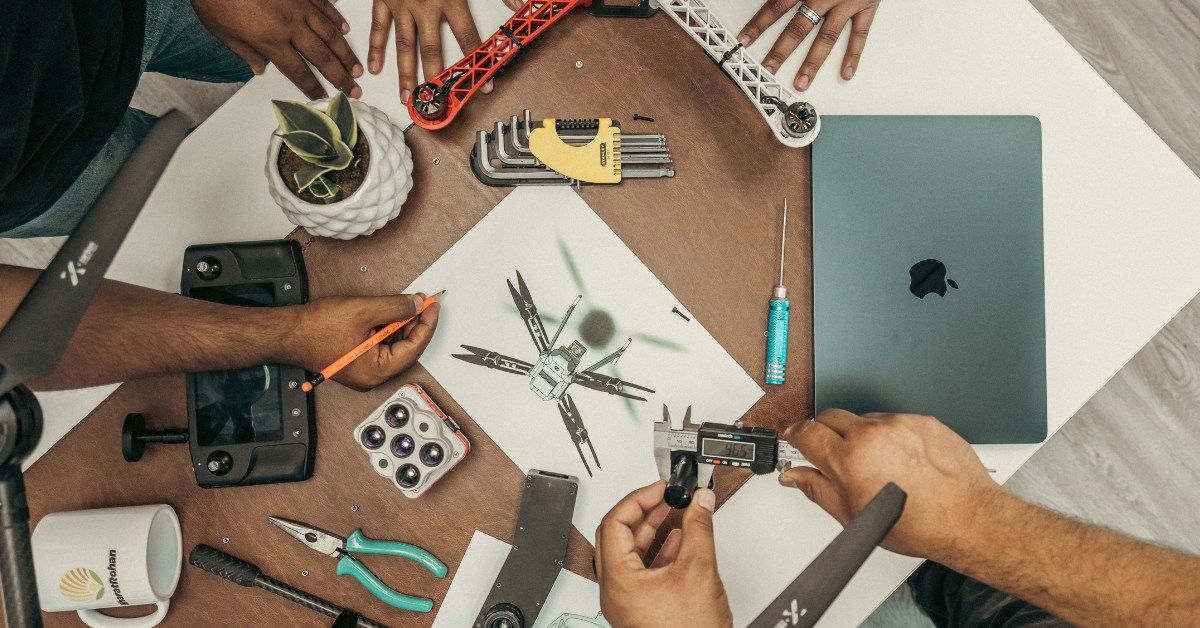 More than 50,000 farmers have used BharatRohan’s drone technology to understand their crop health and earn profits
More than 50,000 farmers have used BharatRohan’s drone technology to understand their crop health and earn profits
Helping over 50,000 farmers farm smarter—with simpler tech
Across seven Indian states and over 200,000 acres, more than 50,000 farmers are now using BharatRohan’s precision farming system to grow healthier, more profitable crops. From turmeric and cumin to mint, cotton, and other export-focused produce, these farmers are seeing real results—not through complex apps or high-tech platforms, but through simple, accessible tools that fit their everyday lives.
While BharatRohan’s backend relies on advanced drone imaging and data analysis, the front end is designed to be easy to use. The team originally launched with a mobile app but found limited adoption. So they pivoted to WhatsApp-based updates, offering crop advisories in local languages, supported by visual field maps that make the data easy to interpret. A chatbot handles routine questions, while field executives provide in-person support, ensuring no farmer is left behind.
Today, BharatRohan operates in Uttar Pradesh, Rajasthan, Maharashtra, Madhya Pradesh, Telangana, Andhra Pradesh, and Meghalaya, with Tamil Nadu next in line. Their team of 70—comprising drone pilots, agronomists, and remote sensing specialists—works closely with farmers to deliver tiered services ranging from basic to premium, priced between Rs 400 and Rs 1,200 per acre per season.
These services go beyond pest alerts and crop monitoring. They include tailored guidance, help sourcing the right inputs, and even assistance in selling produce at better prices, ensuring that technology doesn’t just diagnose problems, but helps solve them.
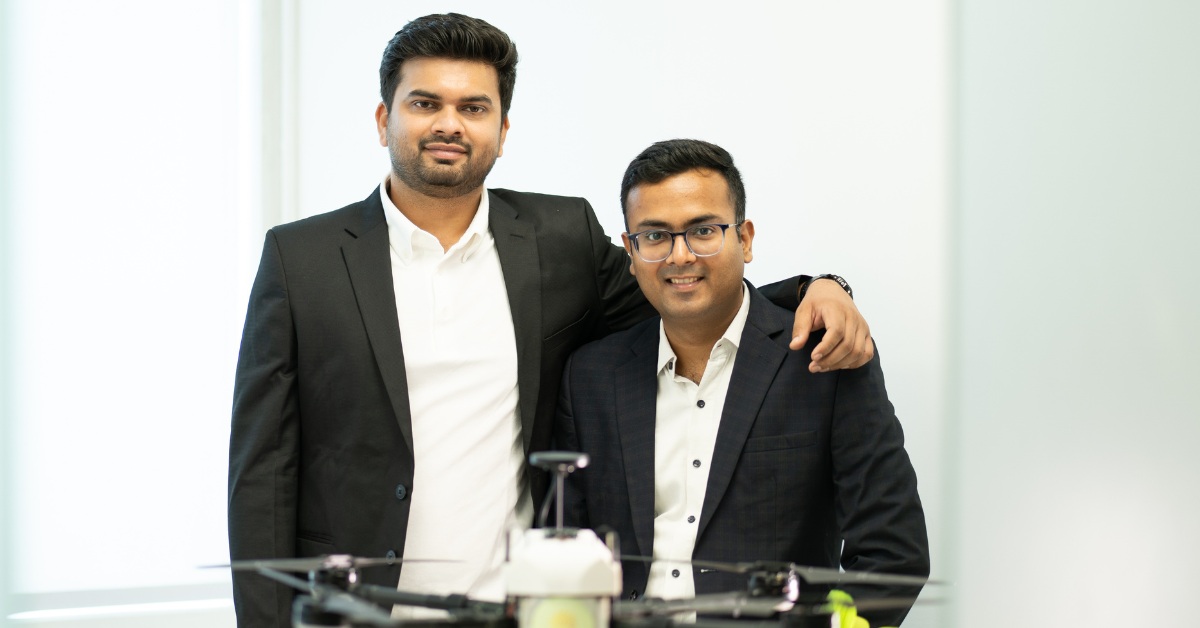 The duo is aiming to decentralise drone operations through a franchise model to scale further
The duo is aiming to decentralise drone operations through a franchise model to scale further
‘Our goal is to create employment opportunities in rural areas’
To scale further, the duo is preparing to decentralise drone operations through a franchise model. Rural entrepreneurs will soon be able to purchase subsidised drones, scan local farms, and send data to BharatRohan’s central analysis team.
“It is about more than just expanding our business,” explains Rishabh. “Our goal is to create employment opportunities in rural areas and empower local entrepreneurs to join and strengthen this agricultural ecosystem. We want to build a sustainable model where communities take ownership and benefit directly from the technology and services we provide,” he adds.
 Even though they did not have a farming background, Amandeep and Rishabh did not let anything stop them from helping the farmers
Even though they did not have a farming background, Amandeep and Rishabh did not let anything stop them from helping the farmers
“We did not grow up in farming families, and in hindsight, that might have been an advantage,” reflects Amandeep. “Without being bound by traditional methods or long-standing habits, we were free to question the status quo. When we saw the challenges farmers faced, we asked ourselves how we could approach these problems in a completely different and effective way.”
From tinkering with drones in dusty fields to changing how thousands of farmers manage their crops, the journey of these two young engineers is a reminder that not all innovation starts in Silicon Valley, sometimes it begins in a mustard field outside Lucknow.
Edited by Leila Badyari; All pictures courtesy BharatRohan
News